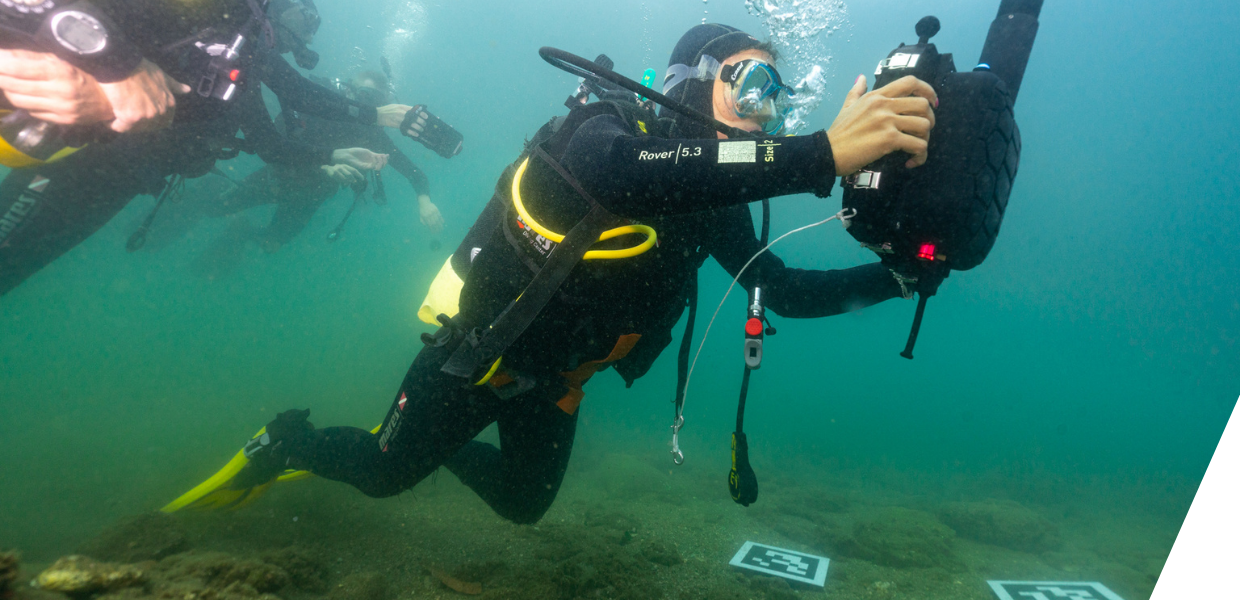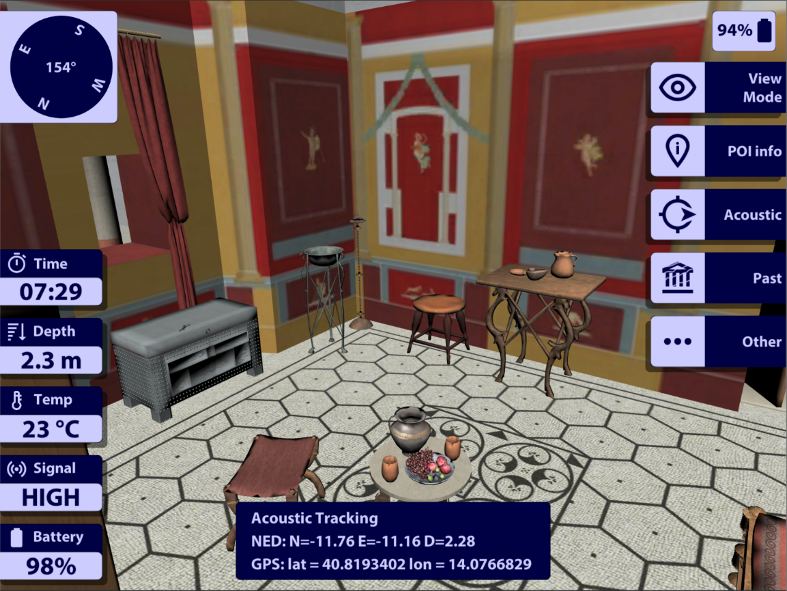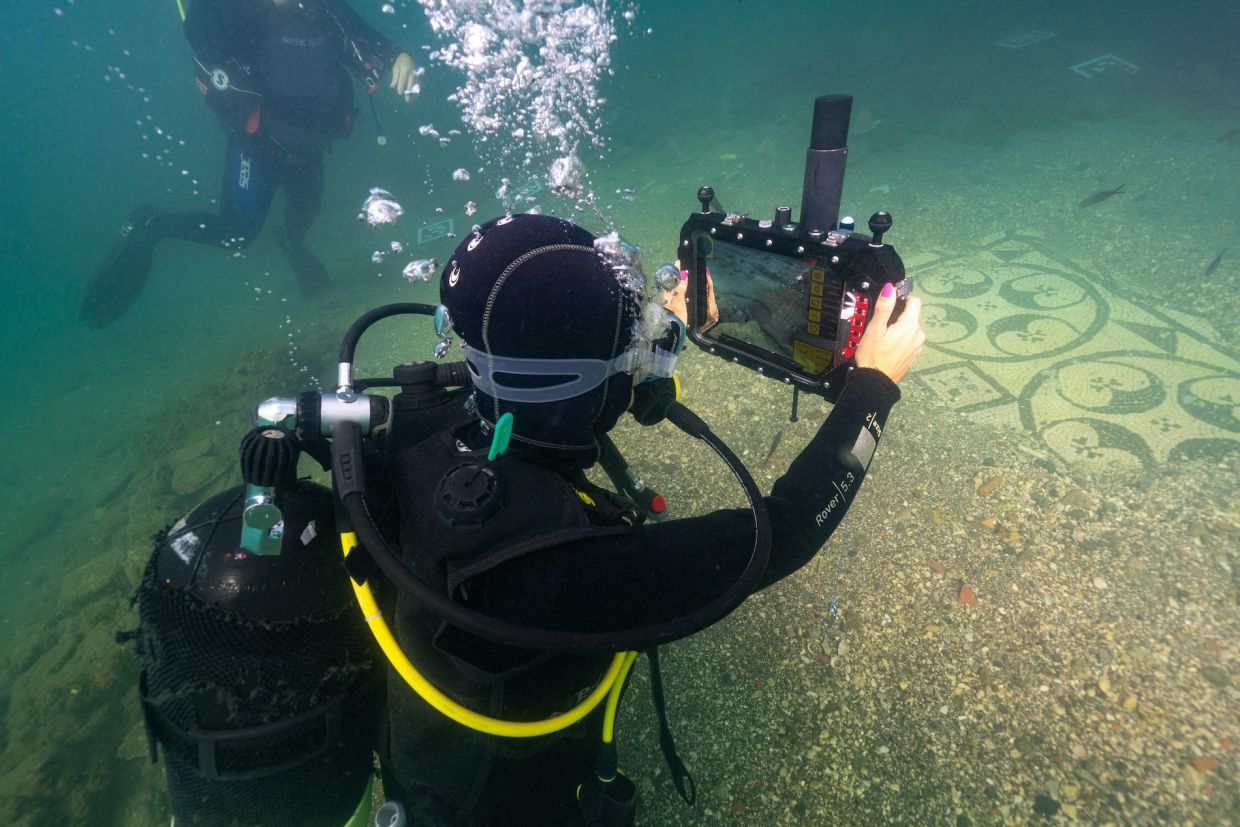How have your audiences reacted to this project?
The system has been deployed in different underwater cultural heritage sites where several recreational and technical divers had the opportunity to use it. They enjoyed their time and claimed that these kinds of solutions have great potential in underwater archaeology and tourism. In particular, they found the interaction with the AR feature natural and they found the experience very engaging. Experts think that this technology could be very useful for professionals too, supporting surveys and documentation of underwater cultural heritage sites.
What have you learned about working with digital cultural heritage from this project?
Due to water turbidity and biological colonisation, pictures taken in the submerged environment seem to be hazy, in a similar way as when landscape photos are degraded by haze, fog or smoke. It was challenging to develop the UWAR feature dealing with underwater environmental conditions. We had to employ different techniques and implement different solutions to overcome all the challenges faced during the realisation of the Underwater Augmented Reality. In particular, we developed an innovative hybrid tracking solution that merges data coming from the acoustic navigation system and the internal sensors of the tablet to improve the localisation of the diver.
This project gave us the possibility to make further progress in underwater AR technology applied to cultural heritage, by providing a useful tool for tourist divers. What’s more, we had the chance to collaborate with experts to create the virtual hypothetical reconstructions of the sites and to collect their feedback to further improve our solution.
What difference does winning an award like this make to your project/future work?
Achieving a special mention in the Heritage in Motion Award made us realise that our UWAR technology can be attractive not only for experienced divers but also for a wider audience of occasional divers or even for users that have never experienced a dive in an underwater archaeological site. It makes us feel very proud of the effort our team put into the whole project, in studying, analysing, designing, developing and testing this innovative solution to improve divers’ experience.
We believe that new technologies can enhance accessibility and valorisation of underwater cultural heritage, as well as raise awareness about the vast maritime heritage that the Mediterranean Sea holds. So, we will continue work on this topic, with the aim to make underwater cultural heritage accessible to everyone.
We would like to thank all the partners of the iMARECulture project and all those who contributed to achieving this result.






